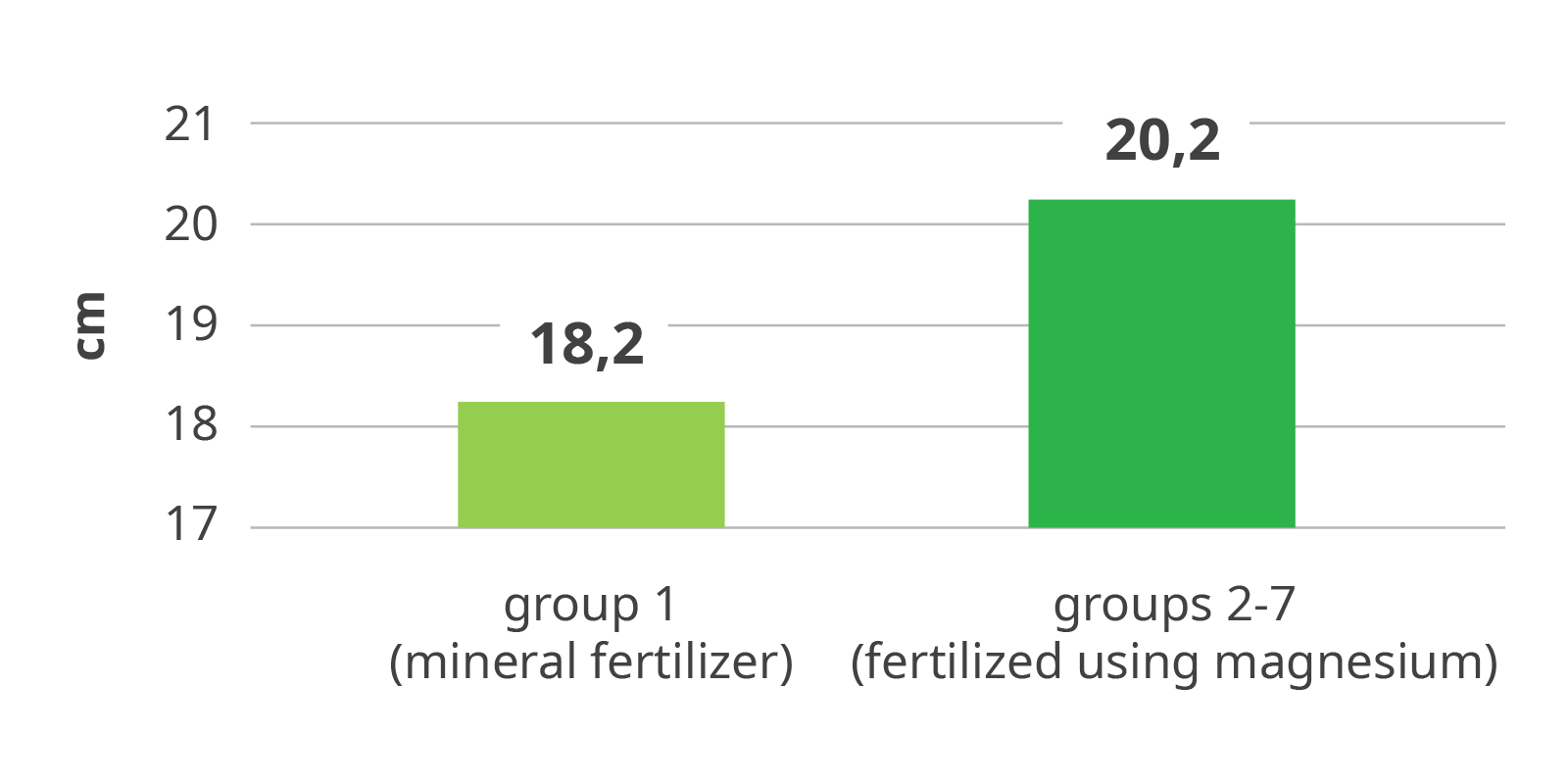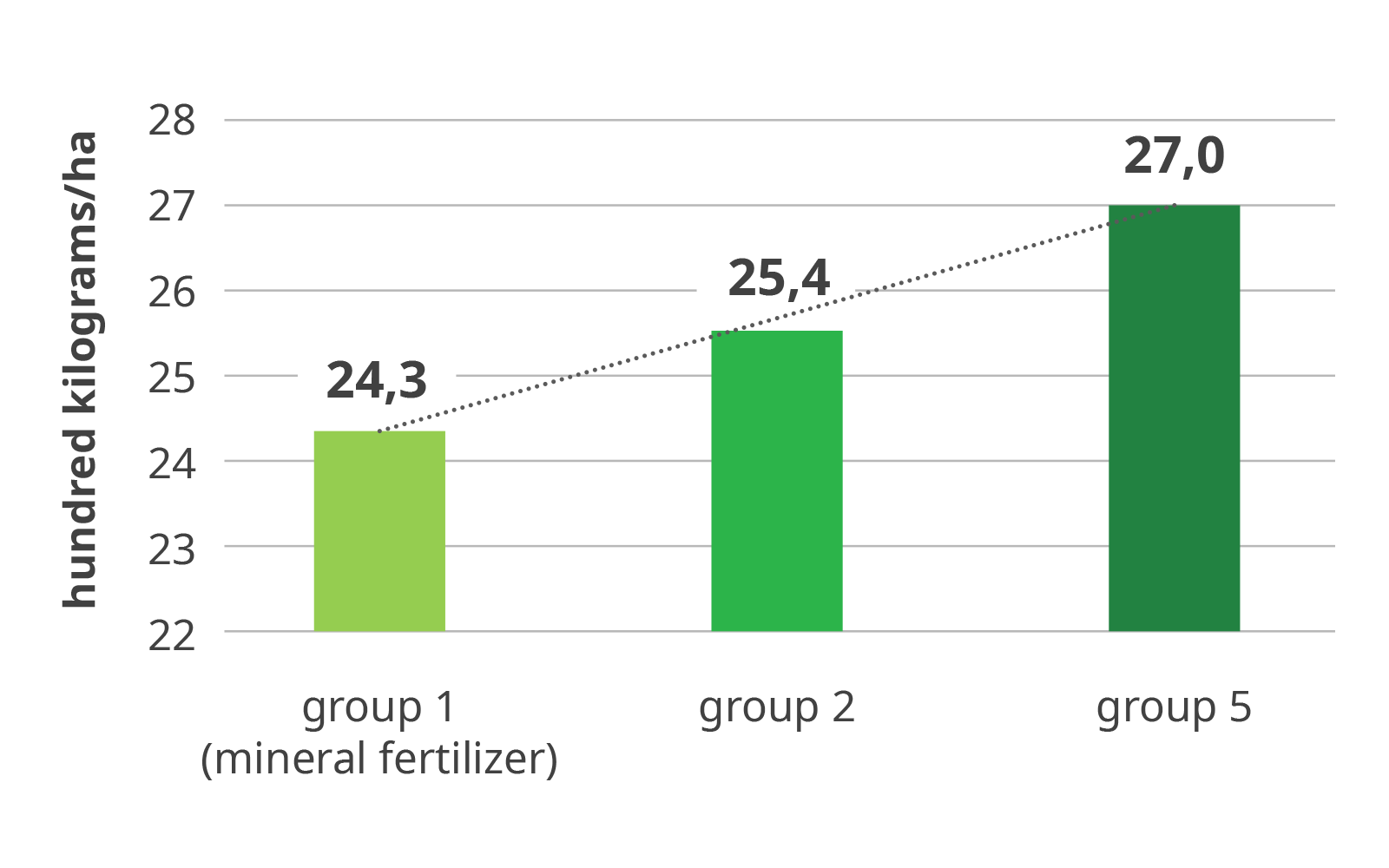Sunflowers are a high-yield oil crop that are popular in many countries. There has been a considerable amount of scientific research on the use of fertilizers in the cultivation of sunflowers in various different soil types, and the most effective proportions of microelements (nitrogen, phosphorus and potassium) have been defined, as well as the optimal dosage of phosphorus, nitrogen and potassium fertilizers for this crop.
But there has been much less research into the use of magnesium fertilizers in sunflower cultivation. However, balanced nutrition is essential in order to grow high quality plants which can provide a high yield of high-quality oil seeds. Magnesium is one of the most important elements in arable farming, and a magnesium deficiency can retard the growth of sunflower plants and result in a pseudanthium with fewer individual flowers, resulting in fewer seeds and a decrease in their nutritional quality. A ton of sunflower seeds contains an average of 10-15 kg of magnesium oxide. The concentration of magnesium oxide in sunflower plants harvested for silage can reach 80-100 kg MgO per ton.
In order to study the impact of new types of magnesium fertilizer made from ground brucite ( a naturally-occurring form of magnesium hydroxide) on a crop of HE118 Pioneer sunflowers, in 2020 a field test was conducted in a leached black earth plot in the Kuban region.
Two forms of magnesium fertilizer were used in the test:
-
AgroMag granules (containing at least 61.4% MgO) for the initial main application, and
-
a leaf application of a suspension of AgroMag AktiMax, containing at least 20.9 % MgO, during the vegetative stage.
AgroMag granules are intended to be applied either in the autumn, when the soil is being prepared for the next season, or in the spring when tilling the field/sowing the crop. In the field test AgroMag granules were added to the soil when tilling the field before sowing and then at the V4-V6 stage. A supplementary dose of concentrated suspension diluted with 200l of water was applied to 1 ha of the crop.
|
Test group |
Ammophoska, kg diluted in water/ha |
AgroMag granules kg MgO/ ha |
AgroMag AktiMax kg MgO/ ha |
|---|---|---|---|
|
1 |
32:32:32 |
— | — |
| 2 |
32:32:32 |
75 | — |
| 3 |
32:32:32 |
— | 1.7 |
| 4 |
32:32:32 |
75 | 1.7 |
| 5 | 32:32:32 | 150 | — |
| 6 | 32:32:32 | — | 3.5 |
| 7 | 32:32:32 | 150 | 3.5 |
The effect of magnesium on the growth of the sunflower plants was assessed on the basis of changes in the plants’ biometric indicators (the height of the plant, diameter of the pseudanthium and weight of the pseudanthium seeds) which determined the final yield.
During the flower-bud formation stage the sunflowers grown using AgroMag magnesium fertilizer and AgroMag AktiMax in various doses and combinations were 14.1% -16% higher than those grown with the application of nitroammophoska alone. This difference increased to 23.8% -25% by the flowering stage and 24.2 -27.3% by full maturity.
Improving the nutrition provided to the plants had a positive impact on their nitrogen uptake. The nitrogen content in the above-ground parts of the plant during the flower-bud formation stage was 3.15% in the No. 1 control group grown with mineral fertilizer, and was found to be higher - 3.19%-3.21% - in the plants treated with magnesium.
Increasing magnesium availability increased the magnesium content in the plants from average (0.36% of dry mass) to high (0.45%-0.47% of dry mass) during the flower-bud formation stage.
As a result of improving nutrition, the plants grown using magnesium fertilizer formed pseudanthia on average 11% larger in diameter (Figure 1) than those grown using standard mineral fertilizer (Group 1), and as a result the weight of seeds harvested from each pseudanthium increased by 2.6% - 4.1%.

The control group (Group 1) had the lowest yield - 2.43 tons/ha The sunflowers with the highest yield (Figure 2) were those grown using a combination of fertilizers including nitroammophoska, AgroMag granules (150 kg of MgO/ha), followed by a leaf application of 3.5 kg MgO/ha of AgroMag AktiMax suspension (Group 7), and those grown using a leaf application of 3.5 kg MgO/ha of AgroMag AktiMax suspension alone (Group 6), with no real difference in yield between those two groups being found. These two groups demonstrated a 13.2%-13.5% increase in yield compared with the plants grown using the basic mineral fertilizer.

Can we conclude from the above that only leaf application worked? No. Most likely the reason for the above results is because the main factor limiting sunflower yield in 2020 was drought. Because of the uncharacteristically arid conditions and higher than normal average daily temperatures during the vegetative stage in 2020, the magnesium fertilizer added to the soil was not fully absorbed by the sunflower plants during specific growth stages, an increase in the fertilizer dose from 75 kg to 150 kg of MgO/ha caused an increase in yield in the groups treated with AgroMag granules (Figure 3).

The results of the field tests thus demonstrate that the use of new magnesium fertilizers derived from the naturally-occurring mineral brucite, both for the initial main application and subsequent leaf application, is an effective way to increase crop growth and development, providing a yield of sunflower seeds of up to 13.5% greater than the yields associated with the use of traditional fertilizer systems in conditions of insufficient precipitation.
Article prepared by A.V. Kozlova, Candidate of Agricultural Sciences based on materials provided by Kuban State University of Agriculture, a Federal Higher Education Institution
From geology to innovation,
Brucite+


